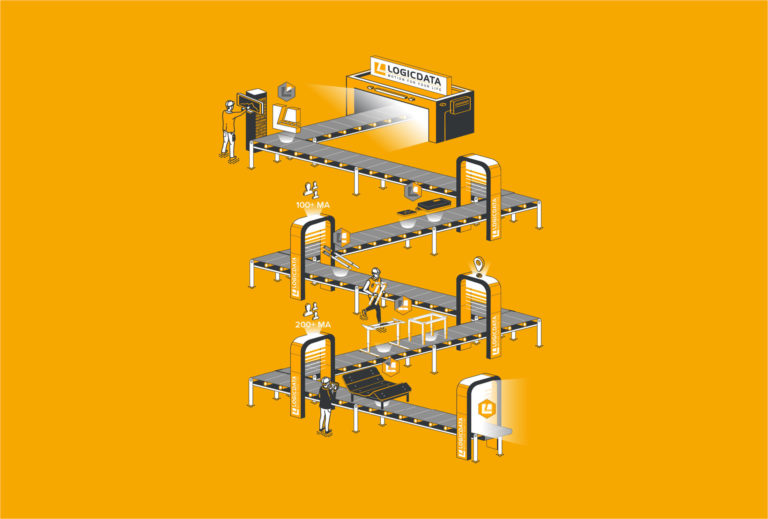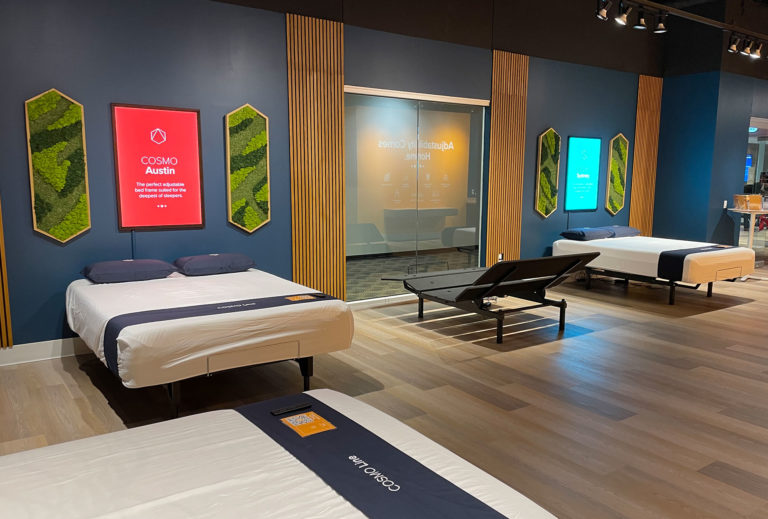Turning the tables: Furniture in a post-COVID world
May 12th, 2020

The show must go on. It can be easy to think that while we’ve been hidden away in coronavirus-enforced isolation, the world outside has stopped turning. Yet nothing could be further from the truth. COVID-19 will be one of the most significant catalysts for change that the modern business environment has ever seen, and the market for office furnishings is no exception to that rule.
With remote working, increased hygiene-consciousness, and social distancing now important parts of our new normal, the question is no longer if the world of work will change in the aftermath of the crisis, but how the key players in the industry will adapt to the shift. To find out the LOGICDATA view of the future, we spoke to key players from across the company to analyze the effects of COVID-19 on the industry, as well as to pinpoint specific measures that can be taken to adapt our product range in the immediate and mid-term future.
In the (virtual) room were Stefan Kieler, VP of Sales and Marketing, Matthias Buch, Product Management Team Leader, Stefan Lukas, CTO, and Thomas Neger-Loibner, Product Manager.
Gentlemen, good morning. We’ve been working remotely for LOGICDATA for a number of weeks now: can you see an end to the crisis, and can you predict how will things look afterwards?
Kieler: I think it’s clear that the entire working environment is going to change significantly and permanently, although the exact extent of the transition remains to be seen. Remote working will increase in popularity, but I’m not convinced we’ll see the same levels of intensity on a long-term basis.
People need social contact, myself included, and I’m looking forward to going back to the office. However, it’s clear that things are not going to be exactly as they were: we will need more space and more protection. My tip would be a gradual return towards US-style cubicle offices or even small personal offices in future.
Buch: I agree with that. Right now, the situation has caused extensive shifts towards home office working, but it’s something of an extreme. Going forward, the office environment will probably become a more nuanced mix of on-site and remote work. In the long run it may affect architecture and office layouts, which would need to be adapted to ensure that close collaboration and social distancing are not in contradiction.
Lukas: I think the way that China has returned to work post-COVID is probably the way we will proceed here in Europe too. More masks, more distancing, more disinfection. I think the remote working principle will eventually be formalized too, potentially on a “one week on, one week off” basis. Of course, it will feel a little unusual at first, but everyone will just have to adapt.
With people working more from home and less from the office, surely there will be an effect on the demand for adjustable office furniture? Is this the end of business as usual?
Neger-Loibner: There will be a change, and with it, new challenges and opportunities. I think we will probably see a broader spectrum of potential customers that includes more private users. However, it is still very early to be making sweeping market assessments about the future of the “physical” office environment: the situation as it is now won’t last forever.
The expectations of a product change when private households make the buying decisions and not companies. Purchasing channels will need adapting: currently our products are usually integrated into systems that are sold through B2B channels, to the extent that very few private buyers actually own a product with LOGICDATA components.
This is changing though. With e-commerce on the rise, we’re reacting and finding ways to make use of the prevailing trends, especially by reaching out to partners with excellent B2C networks.
Buch: There’s a question of attitudes too. Having no option but to work from home on a dining table or couch will make people appreciate the benefits of the ergonomically-promotive workspaces in their office. Usage and engagement will rise, and as a result of this, so will demand.
What sort of characteristics will products need to feature in the future? Will furniture design need significant alterations?
Lukas: The key feature is surfaces. Products, especially user interfaces like hand controls, are going to have to be resistant to regular disinfections and cleaning, not just with water, but with more abrasive agents that are included in office “deep cleans”. Durability will be key to ensuring that neither the outer surfaces of the product or the technology within will be damaged by sanitization, which will require alterations to material selection and testing strategies.
Buch: It goes even further than that. Material scientists have already showed that some bacteria can’t grow on polymeric materials with certain additives such as silver ions. LOGICDATA has already used this strategy in the past, but much more research is required on how other types of diseases, especially viruses, can be eliminated through the use of “resistant” materials
Neger-Loibner: In terms of the whole product, product packaging will need huge optimizations in order to make the buying experience cost-effective and more practical for those private customers. We already showed with the SILVER Series range of adjustable beds that we were capable of making highly-optimized products that can be shipped easily, and we’ll need to do the same to help our partners produce easily-portable home office furniture too.
Which specific solutions can LOGICDATA provide as a reaction to the changes in the office environment?
Buch: Furniture has to follow both interior design and distancing principles, which means in the short term we’ll see more “quick fixes” than actual changes. A good example is benching applications, which are popular because they save space and resources, but are clearly less compatible with social distancing. I think we’ll see adaptation to the benching principle (with protective screens), rather than removal, which is why I think that the DYNAMIC MOTION system by LOGICDATA is still the perfect fit: a cost-efficient way of building benching applications through its shared power source.
Kieler: Alternatives to button-press technology were on the rise anyway, and the crisis will presumably only move the trend further towards modern solutions. There are plenty of options for wireless desk control via smartphone, such as our own LOGIClink and MOTION@work, or alternatively via a virtual handset on the desktop computer itself.
In addition to our off-the-shelf wireless solutions, we’ve developed user interfaces in the past that are based on gesture recognition, rather than pressing and holding a button. These aren’t serial products yet, but the technology is there if the market dictates it is time to implement.
Better still, voice activation would solve a lot of the issues regarding surface contact. There’s still a fair way to go on that one though. Still, we’re always innovating, and always learning. The future still looks bright.



